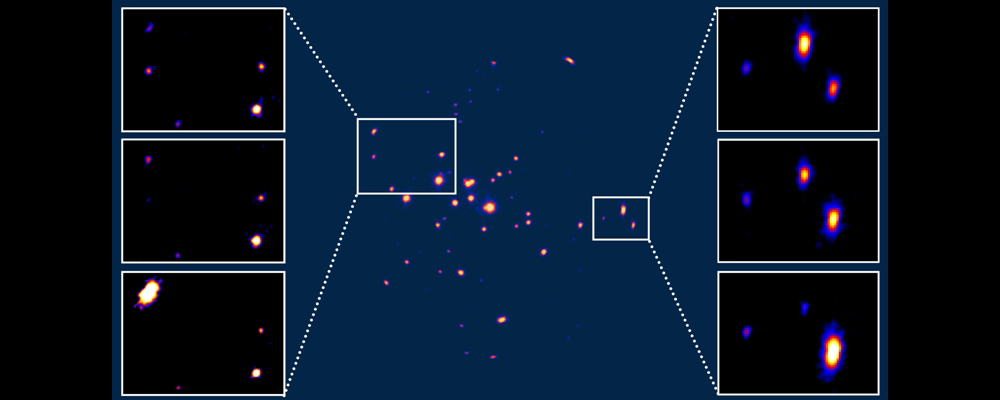The updated Data archive is online! See here
EXTraS – Exploring the X-ray Transient and variable Sky – produced the most sensitive and thorough search for, and caracterization of variability in the soft X-ray sky ever performed. All results were released in a public archive. The project extracted all temporal domain information for about 400,000 serendipitous X-ray sources detected by the ESA XMM-Newton observatory since its launch, on time scales ranging from ~0.1 s to ~10 years, and on fluxes spanning from 10-9 to 10-15 erg cm-2 s-1 in the 0.2-10 keV energy range. The analysis included different lines:

1) Aperiodic, short-term variability, on time scales ranging to the instrumental resolution to the duration of an observation. Background-corrected light curves were produced with both uniform and adaptive time binning (using the Bayesian block approach), in multiple energy ranges; power density spectra were also generated. Such products were characterized by computing a large set of synthetic parameters, describing different aspects of each source variability.
2) Search for pulsations. Using each photon’s time tag, a periodicity search were performed by running an FFT-based approach taking into account the properties of “red” noise related to each source aperiodic variability; a more refined study of all candidate signals was carried out, based on the epoch folding technique.

3) Search for new transients, focusing on sources that rose above detection threshold just in a fraction of the exposure time (and were therefore missed by the standard, time-integrated source detection). A time-resolved source detection approach was used, based on the selection of promising time intervals and detector regions based on the Bayesian block algorithm.
4) Long-term variability, among different observations. A large number of sources have been observed more than once, due to the overlap of different observations at different epochs. A photometric catalogue combining all flux measurements and upper limits to the flux of all sources in all pointed and slew data was produced. Tests for variability and a basic caracterization were performed on the resulting, long-term light curves.
All results and products were released to the community in a public archive, including a database of all parameters describing variability for all sources, and about 17 million files (light curves, hardness ratios, folded light curves, power spectra, …). This is a very rich resource for the study of almost all classes of astrophysical objects, for investigations ranging from the search for rare events to population studies.
Our team published a series of early results, including the ground-breaking discovery of ~1 s pulsations from the extreme Ultraluminous X-ray Source NGC5907 ULX-1, proving the source to be powered by an accreting neutron star, shining about 500 times above its Eddington limit. Such a luminosity, coupled to an extremely high observed spin up rate, challenge current accretion models (see Israel et al., 2017, on the Science web site or on arXiv).
EXTraS was a collaborative effort of six European partners: Istituto Nazionale di Astrofisica (INAF, Italy, coordinator); Scuola Universitaria Superiore IUSS Pavia (Italy), Consiglio Nazionale delle Ricerche – Istituto di Matematica Applicata e Tecnologie Informatiche “E. Magenes” (CNR-IMATI, Italy); University of Leicester (UK); Max Planck Gesellschaft zur Foerderung der Wissenschaften – Max Planck Institut fuer extraterrestrische Physik (MPG-MPE, Germany); Friedrich-Alexander Universitat Erlangen-Nuremberg – Erlangen Center for Astroparticle Physics (ECAP, Germany). EXTraS was funded (2014-2016) by the European Union within the Seventh Framework Programme (FP7-Space).
For more details, please see the project paper.
